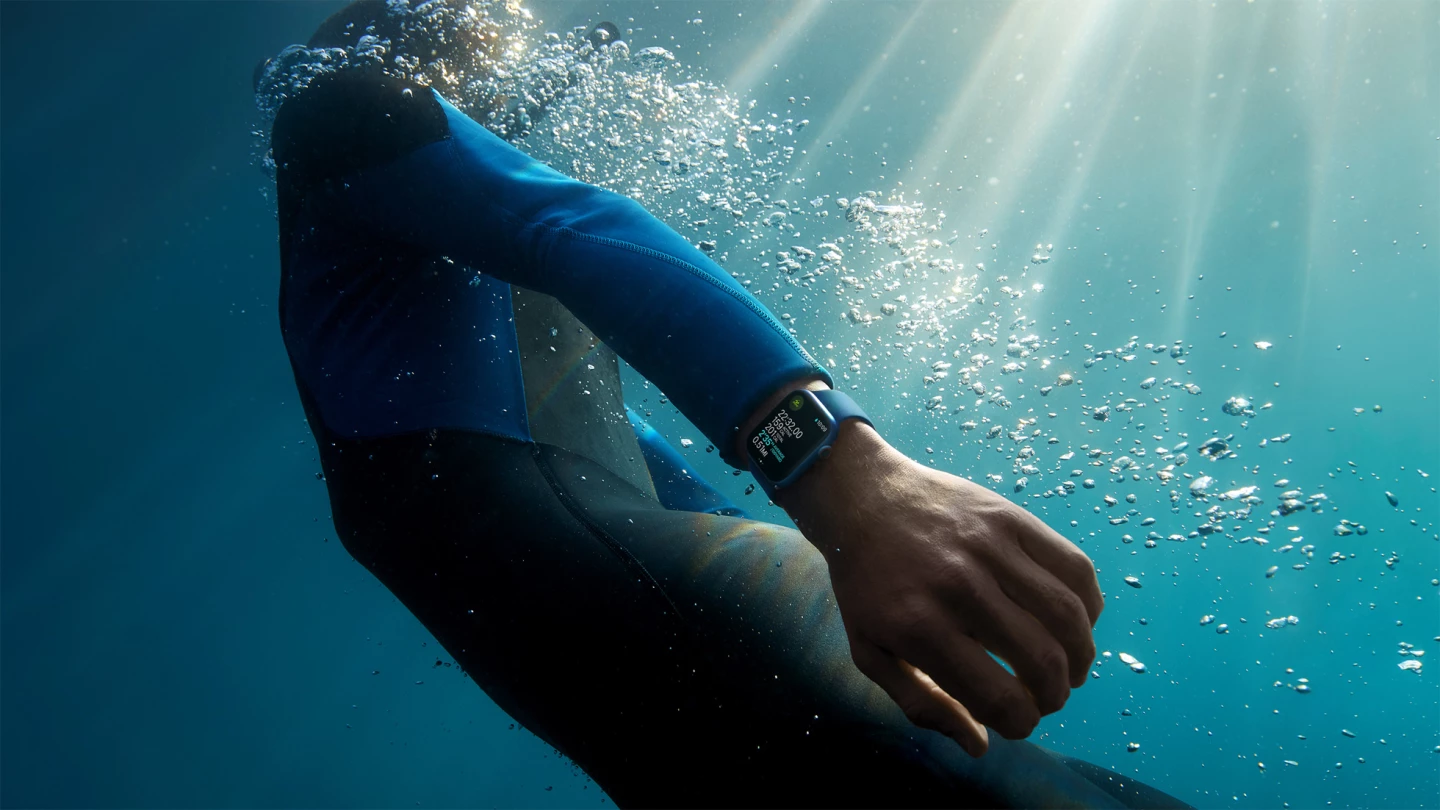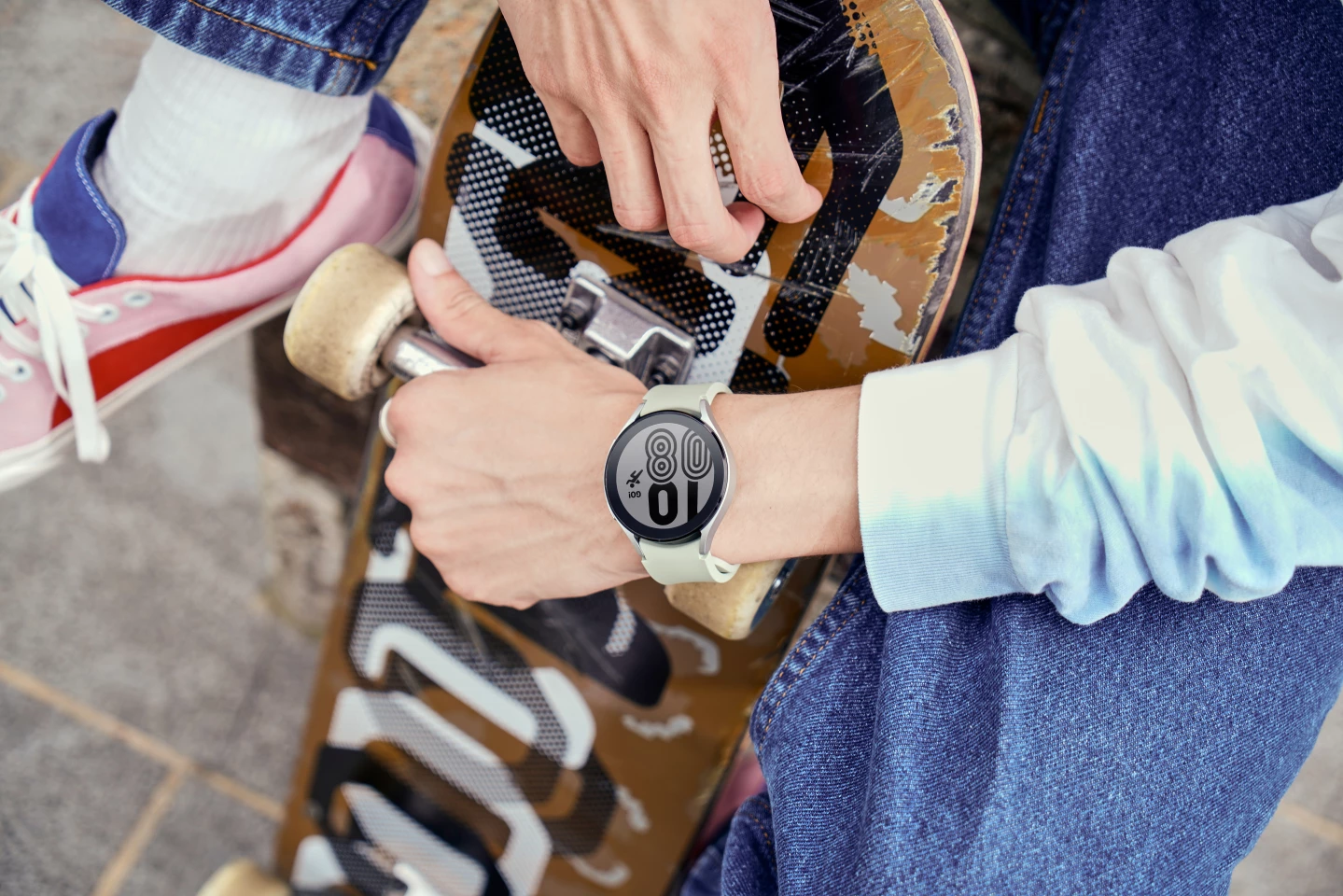It's been another bumper year for smartwatches, with manufacturers improving the technology that drives them while cramming in more features and better sensors. Here's our pick of the best smartwatches of 2021.
Apple Watch Series 7

The Apple Watch 6 topped our list of the best smartwatches for 2020, and continued to attract high praise from industry pundits and consumers alike during much of this year. Until Series 7 launched in September.
Quite simply, if you have an iPhone in your pocket then this is the smartwatch for you.
There are no headline-grabbing tech updates here, but Apple has significantly improved the display, which now offers almost 20 percent more screen area than the Series before, and the always-on Retina display is a lot brighter too.
The Watch 7 runs the latest version of the company's operating system for improved tracking metrics, new workout types, better fall detection, a new Mindfulness app, some new watch faces, and enhancements to the Messages and Photos apps.
The crystal up top is reported 50 percent thicker than before, for more resistance to cracking, and the smartwatch is sealed to IP6X standards, keeping dust out and allowing users to wear it while swimming. And though it has the same 18-hour battery as before, a new charging architecture makes for 33 percent faster charging.
The Apple Watch Series 7 starts at US$399.
Samsung Galaxy Watch4

If the operating system running on your smartphone leans to Android, then the latest Galaxy Watch is a sound choice – particularly as it runs the latest version of Google's Wear OS, which has been co-developed with Samsung instead of the latter company's own Tizen platform like its predecessor.
The smartwatch benefits from MIL-STD-810G durability, comes with a 20 percent faster processor, a more powerful GPU, and a 50 percent increase in RAM. Display resolution for the circular Super AMOLED screen is up too, at 450 x 450 pixels, but only the Classic variant has a rotating bezel for faster scrolling. The regular Watch4 offers a touch area around the screen instead.
Elsewhere, wearers can control the user experience with Bixby voice or gestures, Google apps can be had along with Galaxy services, eSIM tech means users can leave their handset at home, and up to 40 hours of per-charge battery life can be had, with a 30-minute quick charge giving up to 10 hours of use.
It can of course track a bunch of health metrics while active or during slumber, with Samsung employing a 3-in-1 BioActive sensor that uses a single chip to run three health sensors for monitoring of blood pressure, looking for irregular heartbeat, measuring blood oxygen levels and calculating body composition (including such things as body fat percentage, body water, basal metabolic rate and skeletal muscle). And the smartwatch can even connect with a compatible Samsung Smart TV to display metrics on the big screen.
Pricing for the Galaxy Watch4 start at $249.99.
Garmin Venu 2

This stylish sports watch that also happens to be a smartwatch is an update to 2019's "Apple Watch challenger" and comes in two options – the Venu 2 with a 45-mm watch case that's home to a 1.3-inch, 416 x 416-pixel display, and the Venu 2S with a 40-mm watch case and a 1.1-inch, 360 x 360-pixel screen.
Either way, the displays are AMOLED topped by Corning Gorilla Glass 3 and can be optionally set to always on. The smartwatch plays nice with both iOS and Android, can monitor such things as heart rate, respiration, blood oxygen, hydration and sleep cycles, and there's a Body Battery feature that indicates how "charged" a user's body is to help with workout scheduling.
More than 25 sports apps are included covering a range of indoor and outdoor activities, and HIIT workouts come with on-screen animations. The smartwatch can generate a "fitness age" using chronological age, activity, resting heart rate and either body fat percentage or BMI. And the onboard memory has room for hundreds of songs for playback during sessions.
Users get up to 11 days of per-charge usage in smartwatch mode on the Venu 2, and a day less from the Venu 2S – though that will drop by quite a bit with all the bangs and whistles running.
The Garmin Venu 2/2S carry a suggested retail price of $399.99.
Mobvoi TicWatch E3

The latest smartwatch in a line that began with a Kickstarter in 2017, this chunky smartwatch is one of the first to come with Qualcomm's Snapdragon Wear 4100 processor, and boasts a massive performance improvement over its predecessor.
The TicWatch E3 also runs Google's WearOS but it's not the latest flavor like the Galaxy Watch4 – that won't be available for update until next year, making this a capable wearable now, with the potential for greatness later.
It has a 1.3-inch, 360 x 360 curved display with a rather thick bezel, and is available in black only (though straps of different colors can be selected). Onboard NFC means the watch can be used for contactless payments, off-screen navigation can be undertaken using pusher buttons to the right, it can be worn while at the pool thanks to an IP68 rating, and you should get at least a full day of mixed use from the relatively small 380-mAh battery.
On the health and fitness front, the E3 can monitor such things as heart rate, blood oxygen saturation, breathing rate and oxygen consumption, stress and sleep. It can also listen for unhealthy background noise levels and advise the wearer accordingly.
There are 20 professional fitness modes included, and the smartwatch can auto detect user activity and start logging exercise metrics. And a combination of GPS, GLONASS and Beidou will help with route tracking accuracy.
All of which could have you thinking that you'll be needing to dig deep to afford this capable smartwatch, but the TicWatch E3 carries a list price of just $199.99 – though it's currently on sale for $159.99.
Huawei Watch 3

For the past wee while, Chinese tech giant Huawei has been unable to offer users of its smart devices full access to the Android universe. After starting down its own path with the barebones LiteOS found in the Watch GT, the company has now launched a more fully featured mobile operating platform called HarmonyOS. And the Watch 3 is one of the first gadgets to run it.
The smartwatch has a sharp and bright 1.43-inch, 466 x 466-pixel, 60-Hz OLED display with a slightly rounded edge contrasting with the straight edges of the stainless steel case. It comes with an Apple-like rotating crown with haptic feedback at around 2 o'clock position, for easy scrolling through notifications and options, and a programmable flat button at 4 o'clock.
As well as monitoring such things as heart rate, skin temperature, blood oxygen levels and sleep cycles, the Watch 3 can also keep tabs on stress levels. There's support for more than a hundred workout modes, including 19 pro modes for indoor and outdoor sports, cooked-in GPS will help track your runs and, like the Garmin above, this 5-ATM smartwatch can go with you for a swim in fairly shallow water.
Users are promised up to three days of per-charge battery life in mixed use smartwatch mode, or 14 days with only a few features enabled. But there is support for wireless charging.
Even though the HarmonyOS platform is still very young and the smartwatch is not on sale in the US, it's still a solid choice for iOS, Android or Huawei phone users and comes with the promise of much more to come.
The European price for the Huawei Watch 3 is €369 (approx. US$420).
Suunto 9 Peak

The new stablemate to the Finnish brand's award-winning 9 Baro model, the 9 Peak is every bit the premium smart sports watch, and when we say premium we're talking a starting price of $569. Still, there are pricier models on the market and this one is small, thin, and ready for adventure.
The outdoors watch measures 43 x 43 x 10.6 mm (1.69 x 1.69 x 0.42 in), and weighs in at either 52 g (1.83 oz) for the titanium models or 62 g (2.19 oz) for the stainless steel options, and that weight includes the silicone strap.
A 1.2-inch 240 x 240 resolution matrix touch display with adaptive brightness is topped by a sapphire crystal, and there are three physical buttons to the right. Users can expect up to 170 hours of battery life with GPS active, or seven days with tracking and mobile notifications switched on. And best of all, a full charge is reported to take just an hour.
The 9 Peak can monitor heart rate, blood oxygen levels, stress and sleep, and includes more than 80 sport modes that encompass activities like running, mountain biking, skiing and swimming. And every Suunto watch comes with a package of training tools from company partners like Strava, Adidas and Komoot that's valued at over $500.
Routes can be compiled using a companion iOS/Android app – including setting points of interest – and then sent to the device over Bluetooth 5 for offline on-watch navigation (with GPS, GLONASS, Galileo, QZSS and Beidou support). Users can tap into detailed weather insights too, and even keep pace with a virtual ghost runner. The watch is resistant to water ingress up to a depth of 100 m (~330 ft), comes with a digital compass and altimeter, and there's an auto LED backlight as well.
The stainless steel models will set you back $569, while the titanium watches come in at $699.

















